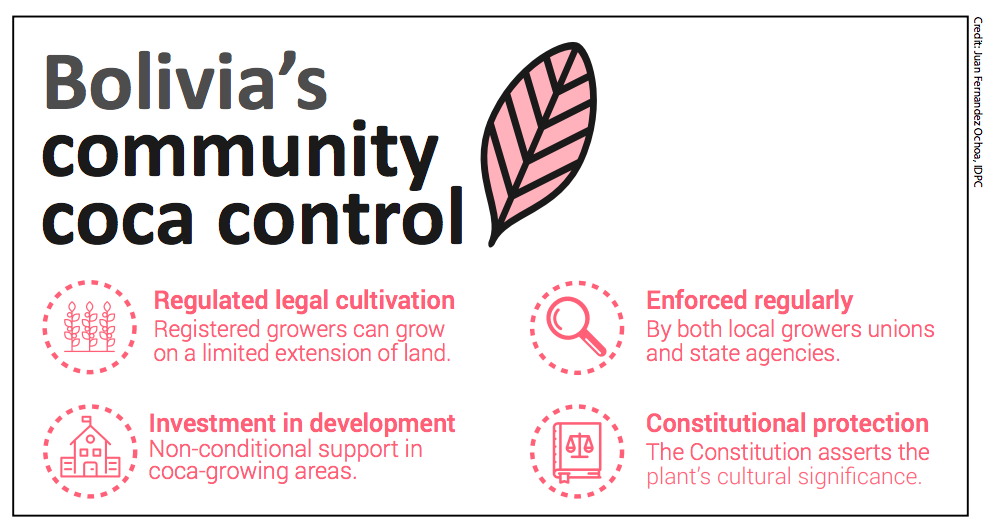The International Drug Policy Consortium’s latest publication, Taking Stock: A Decade of Drug Policy- A Civil Society Shadow Report, reviews the successes and failures of global drug control over the past decade. The report aims to contribute to the debates on drug policy and control to be held in March 2019, at the Ministerial Segment of the 62nd Session of the Commission on Narcotic Drugs, where member states will evaluate the progress made to tackle the world drug problem and propose the UN drug strategy for the next decade.
The Andean Information Network was invited to comment on the Bolivian experience with community coca control. From 1980s until the early 2000s, Bolivia’s drug control strategy fuelled forced coca eradication leading to human rights violations and exacerbating the poverty of affected farmers. From 2006 onwards, Bolivia has shifted its strategy to expand and protect the rights of indigenous coca growers.
This comprehensive, long-term sustainable development model has promoted:
- A reduction in illegal crop cultivation via a development strategy seeking to address affected communities’ basic needs and by limiting repression.
- Citizenship and access to information, empowering and involving communities in the formulation and implementation of development policies, providing subsistence income through legal plots, while working to voluntarily reduce excess coca production and diversifying their economy.
- Development and poverty alleviation in coca growing regions by strengthening public services and institutional frameworks for marginalized communities.
- Respect for the fundamental human rights and wellbeing of families and vulnerable communities, preventing illegal cultivation of coca, while taking into account traditional licit uses.
- Cooperation between farmers, the state, and international stakeholders such as the EU and the UNODC to develop crop monitoring systems and impact assessment tools focusing on broader development considerations


